Six Sigma methodology improves quality by minimizing process inconsistency and removing defective systems. Sigma tools help improve results by utilizing data to fix flawed processes and foster continuous improvement. Six Sigma is grounded in data-based decisions and uses tools that perform data analysis.
Six Sigma software supports the methodology by minimizing inconsistencies and eliminating defective systems in business processes. By leveraging data-driven insights, these tools enable businesses to make informed decisions that drive continuous improvement. Six Sigma apps make data collection fast and accurate, giving Six Sigma practitioners — from Green Belts to Master Black Belts — the information they need to streamline operations.
Most Six Sigma software uses the DMAIC framework (Define, Measure, Analyze, Improve, Control), guiding users through identifying and resolving process inefficiencies. This systematic approach enables employees to tackle issues methodically and establish sustainable improvements. Software solutions that facilitate the DMAIC methodology are powerful resources for any Six Sigma project, as they embed best practices directly into daily workflows.
(Lean Manufacturing is closely related to Six Sigma. Lean manufacturing focuses on the entire business, while Six Sigma reduces inefficient production processes. Lean Six Sigma combines both methods, creating a powerful solution for reducing waste.)
Six Sigma is a collection of tools and methods for improving production by reducing the frequency of errors. Six Sigma is based on the Greek symbol "sigma," which measures the deviation from the process goal or target.
Six Sigma focuses on the customer, measures value, identifies issues, eliminates waste, involves all stakeholders, and implements a responsive ecosystem. Six Sigma improves productivity, reduces process variations, and increases profits, while boosting employee morale, and the quality of goods and services.


A Six Sigma program has five stages or steps. The “Define” phase identifies all pertinent information needed to break down a project problem, or process into concrete, actionable terms. The goal is to achieve process improvements based on actual, measured, and data-driven information rather than abstract goals.
In the Measure phase, manufacturers evaluate their current process capabilities. Organizations need a data-based baseline to make changes in support of improvements listed in the Define phase. In the Analyze phase, the Six Sigma approach assesses data to identify specific root causes of issues.
Meaning is extracted from the data. Insights begin to scaffold concretized process improvements. In the Improve phase, a Design of Experiment plan is deployed to identify the underlying cause of a problem.
In the final stage, Control, quality teams develop a control plan and deploy new standardized processes, outlining improved daily workflows. Each of these phases creates a repeatable template, which measures manufacturing processes' effectiveness and efficiencies.
Manufacturers and other businesses use Six Sigma as a tool to improve processes and quality control. Not only does Six Sigma improve business performance, it also reduces errors, defects, cycle times, and costs.
Essential aspects of a project design include fact and data-based decisions, improving manufacturing procedures, and training that encourages initiative. Six Sigma is a quality and statistical approach that minimizes variation in processes. It also uses tools such as control charts, histograms, process capability, and others.

Reducing Costs: According to the Global Business and Management Research Journal, “uncontrolled variation in processes” is an obstacle to production. Often, variation in production processes causes poor quality, reduced efficiency, and slow cycle times. The Six Sigma method reduces variation in manufacturing procedures and products by adopting a design/redesign approach.
Six Sigma practitioners focus on the impact of financial goals by optimizing processes that are closely linked to customer satisfaction. Customer needs are crucial, especially when making measurable improvements that are critical to quality. Practitioners also implement quality measures that relate to customer needs, such as the timeliness of product delivery.

Six Sigma mobile apps bring quality control closer to the production floor. With features like camera integration, GPS tracking, and digital signatures, manufacturers can collect precise, real-time data. Manufacturers use software for measurement system analysis and to perform statistical methods. Some Six Sigma solutions include:
Benefits of Six Sigma solutions include a standardized industry analysis solution which makes interpreting results easier and quicker. Tools also reduce the frequency of human errors, thus winning the confidence of stakeholders. Other advantages are that Six Sigma tools perform complex analyses that humans cannot.
Minitab is a popular package that is used to analyze data. Features range from descriptive statistics to more complex simulations and distributions. iGrafix conducts process analysis and design using its process mapping tool. Manufacturers create process maps that are compatible with What-If analysis, Enterprise Modelling-Impact & Gap analyses, and other collaboration tools.
Alpha TransForm is a powerful lean six sigma software tool. Alpha TransForm allows manufacturers to build data collection or quality inspection apps that measure performance, and spot flaws in production processes. Six Sigma master black belts can use the data collected by these apps for continuous improvement across all processes.
Employees can build solutions that improve data collection accuracy, speed data delivery, generate quality insights, and integrate with existing systems. Software developers and IT can then add user controls, advanced features, and security functions.

Statistical Process Control (SPC) is an industry-standard methodology for measuring and controlling quality during the manufacturing process. Quality data in the form of Product or Process measurements are obtained in real-time during manufacturing. Mobile apps allow manufacturers to collect better process data.
Upward Mobility prepares professionals for their black belt and green belt Six Sigma certifications. Features include 150 questions for each certification. OEE Monitor is a mobile app for iOS. Features include easy-to-view graphs that identify if processes are improving adequately.

Six Sigma provides guidelines to limit risk exposure while improving efficiency and effectiveness in the delivery of products or services. An example could be reducing the process cycle time or LEAD time. LEAD time is the delay or waiting time between the start of a task and its execution.
The outcome could be standardizing a process with fewer handoffs, rework, or flaws. Minimizing these obstacles to production efficiency saves money. Other benefits could be consistently meeting supplier agreements, avoiding fines, and generating revenue faster.
Alpha Software helps manufacturers build digital quality control and inspection apps rapidly. These custom apps can leverage the latest mobile features: camera, GPS, digital signatures, and more for fast, accurate data capture.
Six Sigma projects also improve timeliness. Goals may be to reduce machine setups, improve production or assembly lines, or partially or fully automate processes.
Before a Six Sigma project can be implemented, manufacturers must define all aspects of efficiency goals. Defects in processes or products must be evaluated using data, figures, and information.
Manufacturers conduct Six Sigma projects to identify how much variation customers experience and how to reduce the number of dissatisfied customers.
Six Sigma projects can be conducted to increase supplier satisfaction. Six Sigma projects can also help anticipate customer needs and manage them through a streamlined process.
No-code and low-code software can make Six Sigma programs more efficient. They help employees quickly reduce repetitive tasks by automating tedious data collection. The software can do complex calculations for employees and create control charts and visualize mapping.
Six Sigma apps decrease dadta errors, root out the cause of inefficiencies, and increase production and profit for organizations. Below are Six Sigma examples for quality improvement:
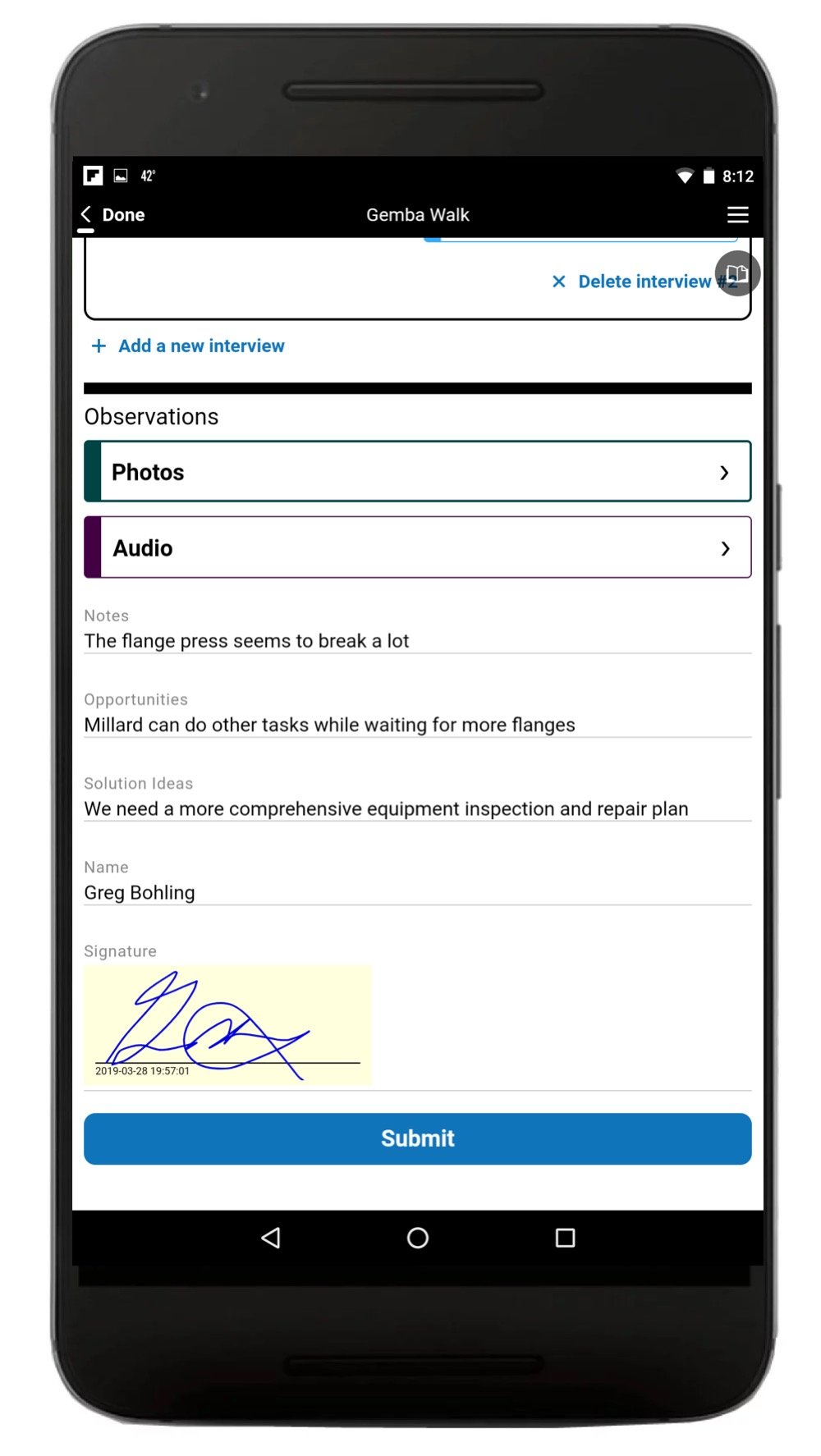


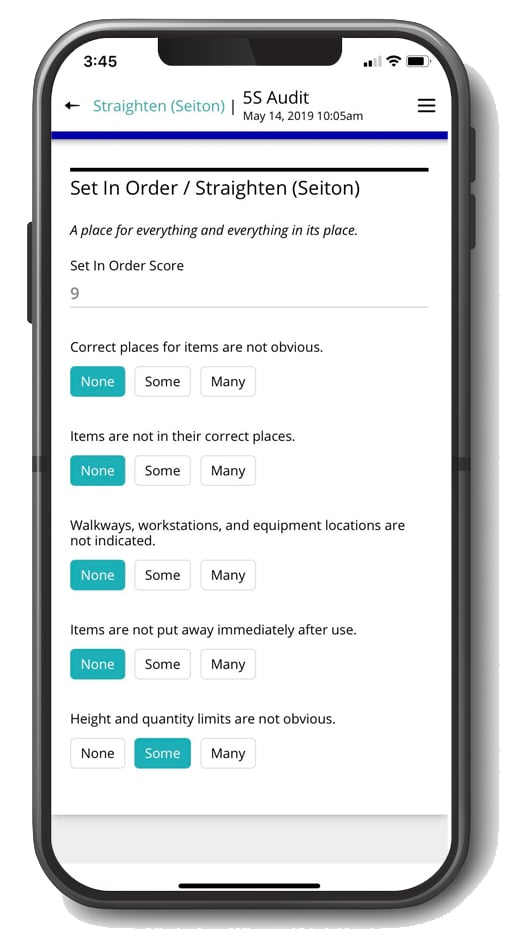

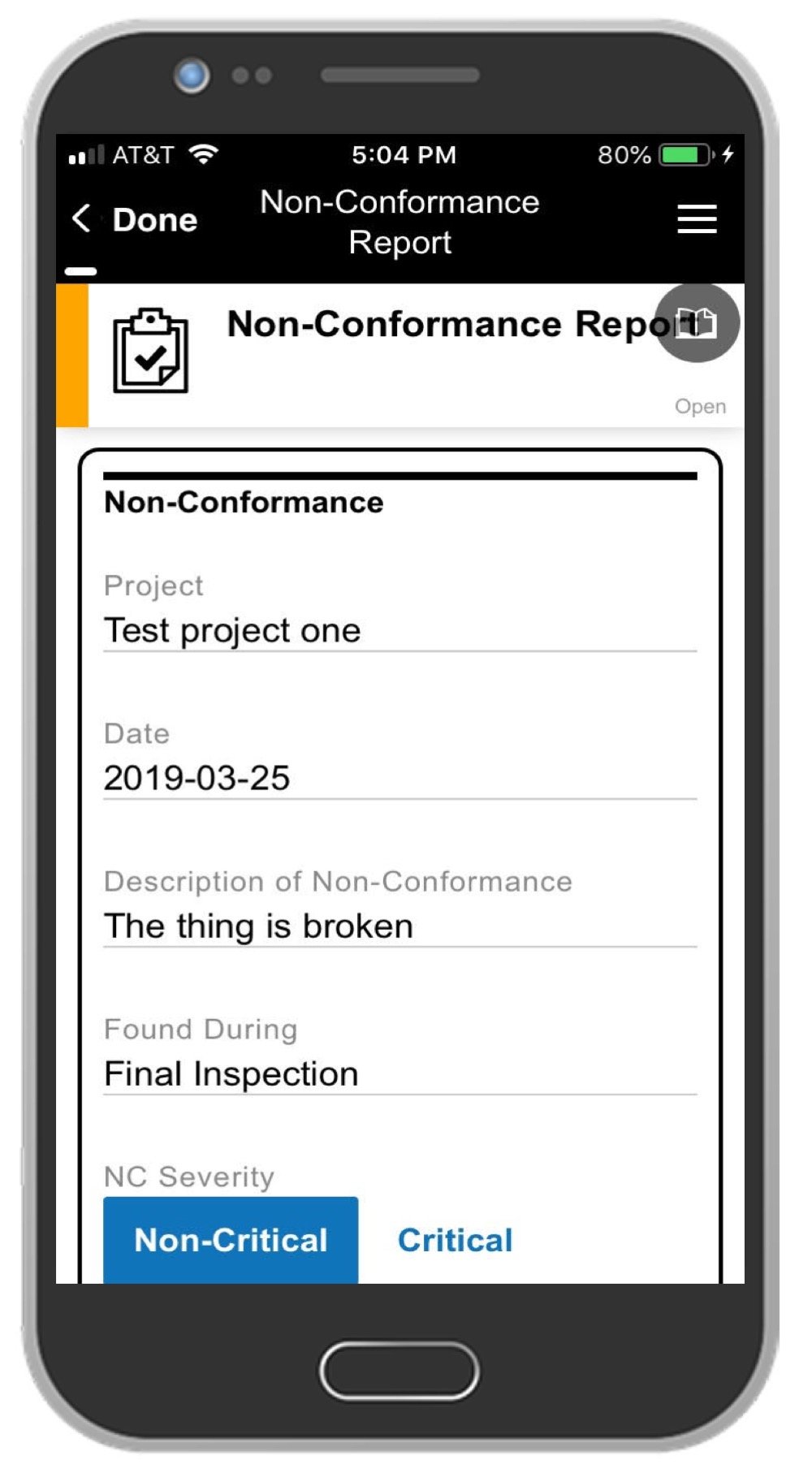
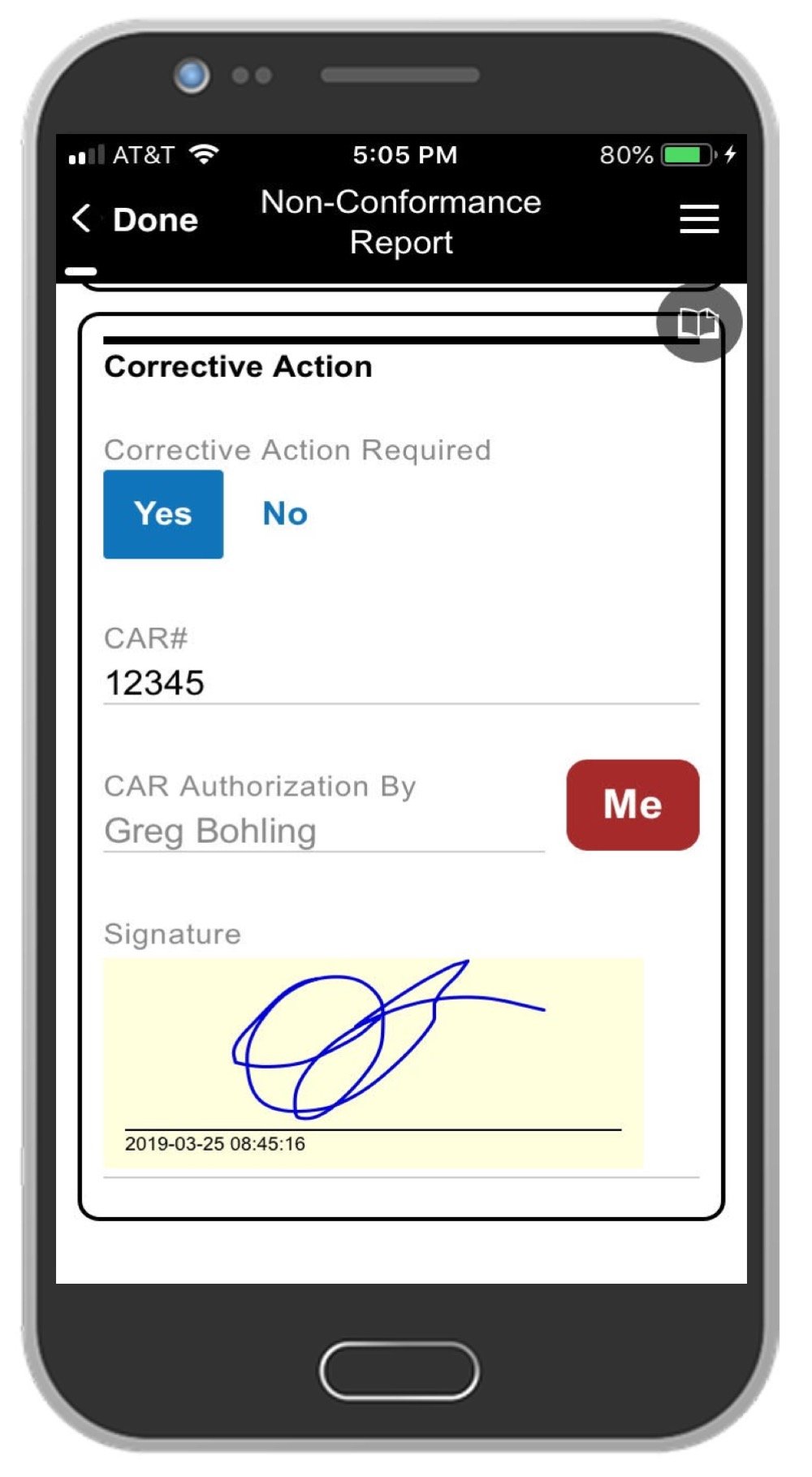
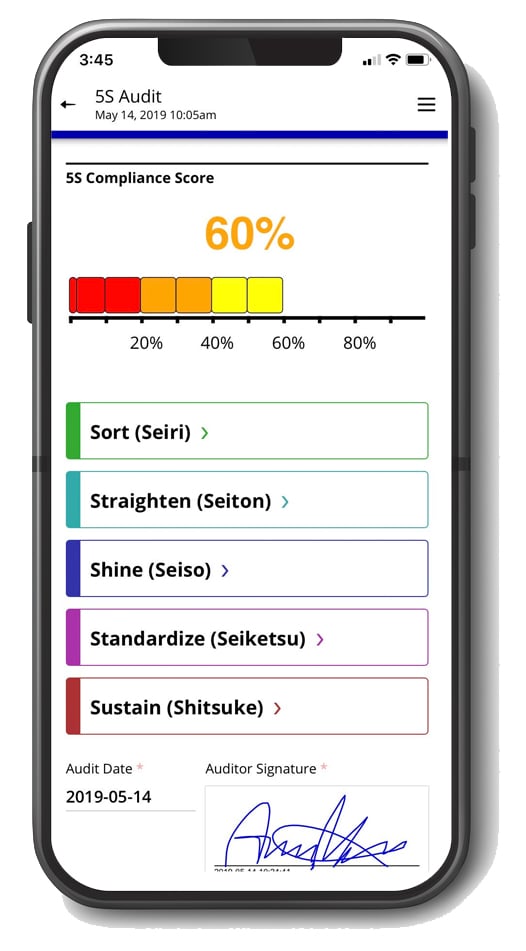
Quality management software is essential for all types of manufacturing businesses, especially smaller companies. Studies show lean Six Sigma software improves quality standards while increasing production levels and raising customer satisfaction. Apps built for six sigma use can also lower the cost of quality efforts when it's used for preventative measures.
Lean manufacturing software consistently delivers high ROI, reduces errors, and drives continuous improvement. Alpha Software works with Six Sigma leaders to craft the right Six Sigma solutions for your needs.
The Alpha platform is the only unified mobile and web app development and deployment environment with distinct “no-code” and “low-code” components. Using the Alpha TransForm no-code product, business users and developers can take full advantage of all the capabilities of the smartphone to turn any form into a mobile app in minutes, and power users can add advanced app functionality with Alpha TransForm's built-in programming language. IT developers can use the Alpha Anywhere low-code environment to develop complex web or mobile business apps from scratch, integrate data with existing systems of record and workflows (including data collected via Alpha TransForm), and add additional security or authentication requirements to protect corporate data.
Alpha Software Corporation, based in Massachusetts, produces award-winning software that speeds mobile and web app development and deployment for business and IT. The core technology includes two components. Alpha Anywhere®, a full-stack low-code app development platform for building and deploying web and mobile apps. In just hours, Alpha TransForm® turns complex paper forms into powerful mobile forms that speed data collection.
Alpha Software is an InfoWorld Technology of the Year award winner, and scores near-perfect reviews from customers on crowdsourced review sites.
Customers rate Alpha Software highly for its speed of development, flexibility, offline apps, rich feature set and ability to scale predictably. For more information, visit https://www.alphasoftware.com/